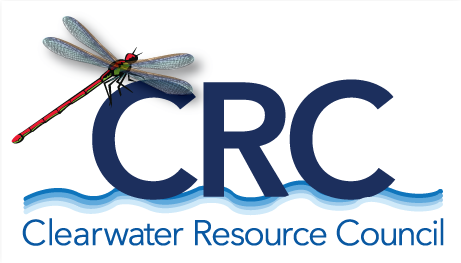Clearwater Lakes Alliance Information
~Rainy Lake~
View from the southeast shore of Rainy Lake. Photo by J. Harrits
Figure 1: Location of Rainy Lake within the Clearwater Watershed
CRC volunteer checking the clarity of Rainy Lake.
Photo by J. Harrits
Located just north of Lake Alva along Highway 83, Rainy Lake is a small body of water we have been monitoring for the past decade through our Adopt-a-Lake program (see figure 1). Like Clearwater Lake, it is one of the smaller and more remote lakes in our watershed, and is undeveloped and remains pristine in nature.
This lake is fed by Bertha Creek on its north shore, which connects this lake to Summit Lake, a few miles north of Rainy. Water flows out of Rainy Lake through the Clearwater River on its southern shore, which leads to Lake Alva.
Rainy Lake has been monitored through CRC’s Adopt-a-Lake program for the past decade. Although similar in size and remoteness, Rainy Lake generally has lower water clarity than Clearwater Lake (see figure 2). Rainy Lake has some of the shallowest recorded Secchi disk readings, sometimes above the “eutrophic” boundary defined in figure 3.
Figure 2: Secchi depths recorded on Placid Lake from 2009 through 2019.
Figure 3: Secchi depths recorded at 15 sites on 8 lakes in the Clearwater Watershed, 2009 through 2019. The red and green lines represent the bounds for transparencies considered indicative of eutrophic and oligotrophic conditions, respectively.
Because Rainy Lake is undeveloped, remote, and has shown no sign of decreasing water quality, we will not be monitoring this body of water in 2020. Rainy Lake may be monitored again in the future.
Establishing baseline monitoring data through our Adopt-a-Lake program is only the start. Contact CRC’s Jon Haufler ( jon@crcmt.org) to learn more about current efforts and/or how you can get involved.
Return to the Clearwater Lakes Alliance main page.





